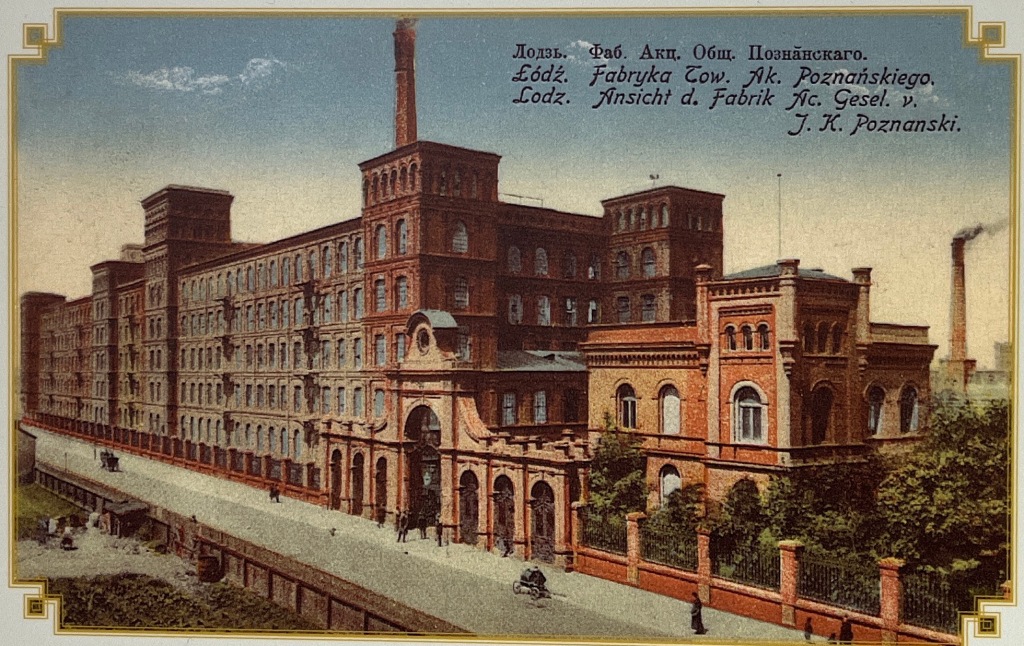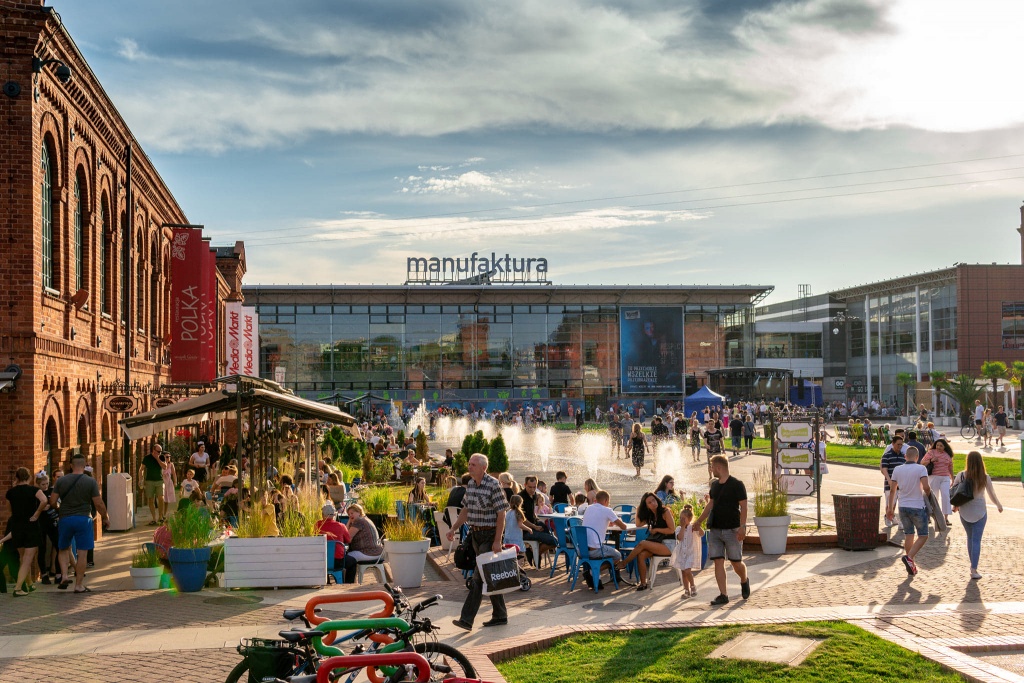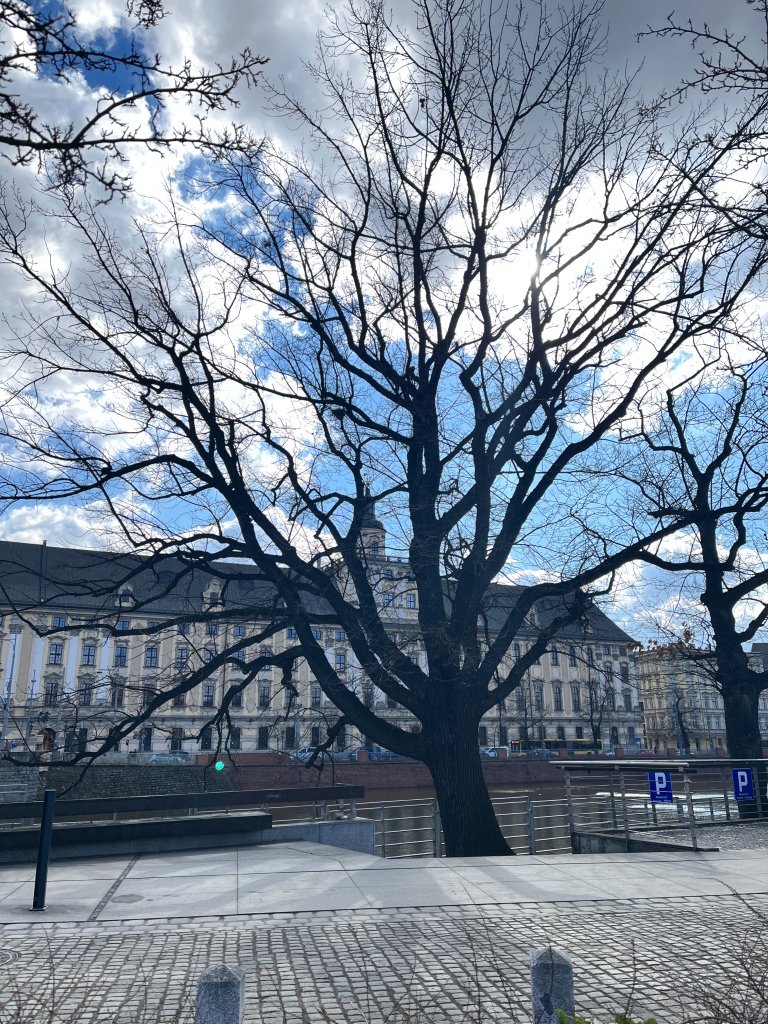by Lisa Fetheringill Zwicker, Fulbright Scholar in Wrocław, Poland
How might the factory buildings from nineteenth century industries be used in today’s twenty-first century information age economies? The Polish city of Łódź offers a creative and compelling model, one that albeit requires significant public and private investment to succeed.

South Bend, Indiana and Łódź Poland share a similar economic trajectory. They both rose to industrial importance in the second half of the nineteen century, and they both declined in the twentieth.
This picture shows Łódź before development began.

The two cities have the skeletons of the industrial past within their midst.

The annual mid-year meeting for Fulbright students and scholars took place in 2022 in Łódź Poland, and my visit to Łódź showed me one way that beautiful architecture of the past could be re-developed for new purposes.

As part of two days of activities, students learned about the city and its past through a city tour where we spent time in factory campuses created by the Izrael Poznański and Karol Scheibler. In these places, entrepreneurs created not only vast factory spaces for spinning textiles but also built homes for workers, as well as fire stations, schools, and kindergartens.

Our tour guide mentioned that so many of the workers’ needs were met within the network of the factory buildings that if the rest of the city of Łódź were to disappear, the workers would have barely noticed it.
As in Łódź, in South Bend, the Studebakers and the Olivers also created vast factory spaces – in their case for the carriages and cars they produced. Like Łódź entrepreneurs, they also created workers’ homes and social services.
In Łódź, when I strolled through the beautifully restored buildings of brick, thronged with shoppers on a sunny Saturday, it felt bittersweet to think back to South Bend with its similar set of buildings full of possibility that also await the possibility of restoration.

For Łódź, finding the funds for redevelopment has taken time, and the redevelopment has not happened overnight. As Łódź was a city of 30% Jews before the Holocaust, the leaders had to wait for property rights to be determined before the city could be redeveloped. Up to 90% of Polish Jews were murdered in the Holocaust, and it was difficult to find their descendants. In the last 30 years since the fall of communism, the city has slowly begun building.
In these structures it is possible to see the beginnings of the sanding, cleaning and refining of the old brick, starting from the top of the building.

Like South Bend, Łódź, Poland is also a city with cold and gray winters and hot sticky summers. Yet like so many other European cities, there is a culture of walking and using public transportation which make developments like this much more possible. The willingness to pay taxes and to invest in public spaces also separates Europe from the United States where it is much more difficult to create a massive project like this one. I wonder if it is also a certain willingness to wait that makes the slow steady progress of a place like Łódź, possible.





I was struck that right across from the beautiful Art Museum, buildings still awaited renovation with holes in the building and graffiti.

Initial funding for the Manufaktura project came from private French investors, but European Union, Polish government, and other regional and city funds also made it possible.
Can we in the US, with so many beautiful historic buildings do something similar?
South Bend’s Studebaker buildings are just waiting…



















































 She had a chance to visit cities
She had a chance to visit cities
 and she loved exploring the public markets
and she loved exploring the public markets but best of all were the people that she met,
but best of all were the people that she met,



 In the image above, the waves in the red city archives echo the water of the inner harbor, and the cranes out front recall Duisburg’s industrial past. The beautiful Duisburg Landscape Park represents the largest of these projects. Built by architect Peter Latz, the park reuses what had been a polluted industrial wasteland. It incorporates elements from the previous chemical and coal production facilities, but has made this area into a park now safe for recreation for all.
In the image above, the waves in the red city archives echo the water of the inner harbor, and the cranes out front recall Duisburg’s industrial past. The beautiful Duisburg Landscape Park represents the largest of these projects. Built by architect Peter Latz, the park reuses what had been a polluted industrial wasteland. It incorporates elements from the previous chemical and coal production facilities, but has made this area into a park now safe for recreation for all.  A set of interlocking climbing walls with different levels of difficulty replaced stone storage structures for coal.
A set of interlocking climbing walls with different levels of difficulty replaced stone storage structures for coal.  Here lavender grows in orderly rows and its scent wafts up to the walking path above
Here lavender grows in orderly rows and its scent wafts up to the walking path above 


